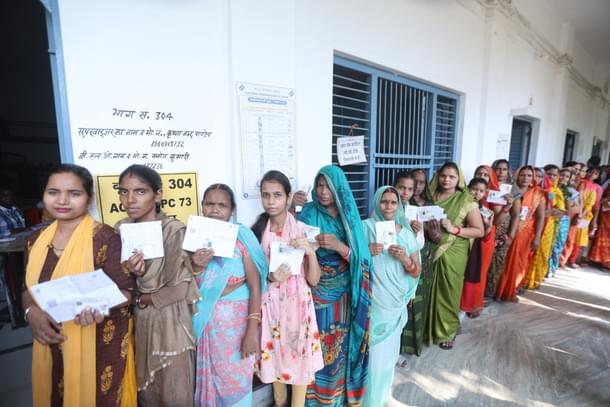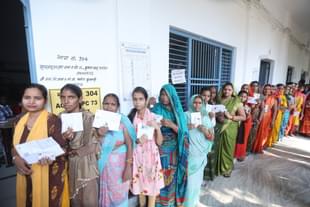News Brief
Election Commission Releases 'World's Largest Electoral Dataset' For Analysis; Female Voter Sex Ratio Hits All-Time High Of 946
Nishtha Anushree
Dec 26, 2024, 06:24 PM | Updated 06:24 PM IST
Save & read from anywhere!
Bookmark stories for easy access on any device or the Swarajya app.


On Thursday (26 December), the Election Commission of India (ECI) revealed the "world's largest electoral dataset," comprising 42 statistical reports on the 2024 Lok Sabha elections and 14 reports on each of four state assembly elections.
The purpose of this initiative is to foster transparency, stimulate research, and bolster public confidence in India's voting system. The anticipated sharing of this comprehensive dataset by the ECI is aimed at addressing criticisms regarding the poll body's lack of disclosure.
The ECI states that these reports will serve as a significant asset for scholars, researchers, and global election observers. They will facilitate a thorough examination and understanding of election policies.
The dataset provides comprehensive data including electors divided by Parliamentary and Assembly constituencies, numbers of polling stations, voter turnout broken down by state or constituency, the proportion of votes received by each party, voting patterns based on gender, participation of women, regional voting trends, summaries of constituencies, performance evaluation of national and state parties, analysis of winning candidates, among other details.
An ECI official told ANI, “This exhaustive data set empowers stakeholders to slice and dice data for a granular level analysis with comparison from data sets of previous elections already available on ECI website. These reports will facilitate time-series analysis to track long-term outlook and shifts in electoral and political landscape.”
In 2024, the number of registered voters increased to 97.97 crore, marking a 7.43 per cent growth from the 91.19 crore registered in 2019. The total votes cast rose to 64.64 crore from 61.4 crore in the previous election year.
Out of these, 64.21 crore were cast through Electronic Voting Machines, comprising of 32.93 crore male voters, 31.27 crore female voters, and 13,058 third gender voters. Additionally, 42.81 lakh votes were submitted via postal ballots.
The highest voter turnout was recorded in Dhubri, Assam with 92.3 per cent, while Srinagar in Jammu and Kashmir had the lowest at 38.7 per cent, which is still a considerable increase from its 14.4 per cent in 2019.
There were 11 parliamentary constituencies where the voter turnout was less than 50 per cent. The None of The Above (NOTA) option received 63.71 lakh votes, making up 0.99 per cent of the total votes, a slight decrease from the 1.06 per cent in the previous year.
The 2024 Lok Sabha elections underscored the remarkable progress in women's involvement. Out of the 97.97 crore registered voters, 47.63 crore were women, an increase from 43.85 crore in 2019, making up 48.62 per cent of the total voters compared to 48.09 per cent in 2019.
The region with the most substantial percentage of female voters was Puducherry (53.03 per cent), closely followed by Kerala (51.56 per cent). The ratio of female to male voters soared to a record-breaking 946 per 1,000 males, a rise from 926 in 2019.
The turnout of female voters exceeded that of male voters, at 65.78 per cent compared to 65.55 per cent, marking only the second time in Lok Sabha history that women have outvoted men, the first being in 2019.
The highest female voting turnout was in Dhubri, Assam, with 92.17 per cent, followed by Tamluk, West Bengal, with 87.57 per cent. In relation to representation, the number of women who contested the elections increased to 800 from 726 in 2019.
Maharashtra saw the highest number of female candidates at 111, followed by Uttar Pradesh with 80 and Tamil Nadu with 77. Despite this, there were still 152 constituencies that did not have any female candidates.
Nishtha Anushree is Senior Sub-editor at Swarajya. She tweets at @nishthaanushree.





